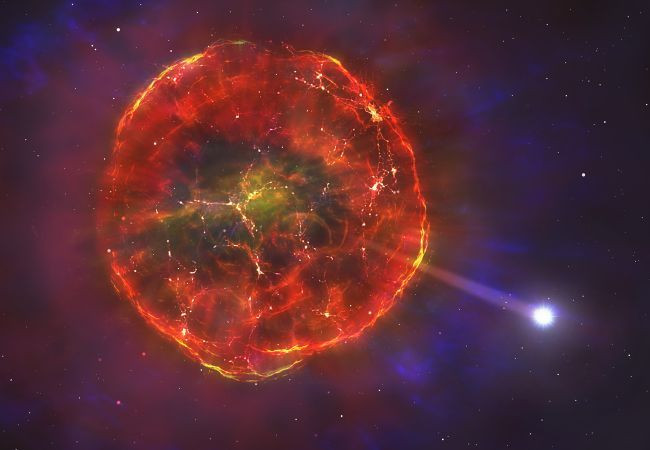NASA Hubble Captures Exploding Star As Bright As 5 Billion Suns [Watch]
The supernova outshined all the stars in its galaxy before slowly fading out.
KEY POINTS
- NASA's Hubble Space Telescope has captured the events of a supernova
- SN 2018gv is located in a galaxy 70 million light-years away
- NASA released a short time lapse sequence of the snapshots taken by Hubble
NASA'S Hubble Space Telescope has done it again -- capturing the spectacular events of a supernova. This time, the self explosion of the star happened 70 million light-years away.
The exploding star (SN 2018gv), located in a spiral galaxy called NGC 2525, was first observed in February 2018, when it was detected by amateur astronomer Koichi Itagaki. NASA astronomers have been using supernovae to help study the precise measure of the expansion rate of the universe.
Combining all the photos the Hubble Space Telescope has acquired in a year, NASA has come up with a short yet breathtaking time lapse of supernova SN 2018gv. In the video, the supernova initially appears as a blazing star located at the outer edge of the galaxy, outshining all the brightest stars surrounding it before it eventually fades out.
At its peak, the star was as bright as 5 billion suns.
“No Earthly fireworks display can compete with this supernova, captured in its fading glory by Hubble,” said Adam Riess, a Nobel laureate and a researcher at the Space Telescope Science Institute and Johns Hopkins University and leader of the High-z Supernova Search Team and the Supernovae H0 for the Equation of State (SH0ES) Team.
This type of supernova is known as Ia, and occurs in a binary system (two stars orbiting one another) where one of the stars is a white dwarf, Sci News noted. If the white dwarf reaches a critical mass (1.44 times the mass of the sun), its core becomes hot enough to ignite carbon fusion, which then triggers a number of processes, eventually resulting to the star being teared apart by all the energy it released and turning it into a giant atomic bomb.
Supernovae of this type always peak at the same brightness, making them known as "standard candles" that act as cosmic tape measures, NASA said. By finding out the brightness of a supernova, astronomers are then able to calculate the distance of host galaxies.

© Copyright IBTimes 2025. All rights reserved.





















